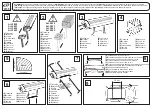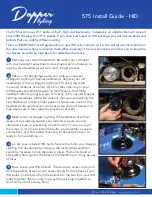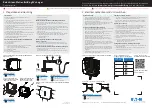
Vehicle care
167
Incorrect tyre pressures will impair
safety, vehicle handling, comfort and
fuel economy and will increase tyre
wear.
The tyre pressure tables show all
possible tyre combinations
3
194.
For the tyres approved for your
vehicle, refer to the EEC Certificate of
Conformity provided with your vehicle
or other national registration
documents.
The driver is responsible for correct
adjustment of tyre pressure.
9
Warning
If the pressure is too low, this can
result in considerable tyre warm-
up and internal damage, leading to
tread separation and even to tyre
blow-out at high speeds.
If the tyre pressure must be reduced
or increased on a vehicle with tyre
pressure monitoring system, switch
off ignition.
After adjusting the tyre pressure,
switch on ignition and select the
corresponding setting on the DIC tyre
load page
3
78
Tyre pressure monitoring
system
Caution
Modifications made to the tyre
pressure monitoring system
(TPMS) by anyone other than an
authorised service facility may
void authorisation to use the
system.
The tyre pressure monitoring system
checks the pressure of all four wheels
once a minute when vehicle speed
exceeds a certain limit.
Caution
Tyre pressure monitoring system
warns only about low tyre pressure
condition and does not replace
regular tyre maintenance by the
driver.
All wheels must be equipped with
pressure sensors and the tyres
must have the prescribed
pressure.
The current tyre pressures can be
shown in the Driver Information
Centre
3
78.
To access the Tire Pressure Page:
■ Press the MENU button to select
the Vehicle Information Menu.
■ Turn the adjuster wheel to select
the tyre pressure monitoring
system.
System status and pressure warnings
are displayed by a message with the
corresponding tyre flashing in the
Driver Information Centre. A detected
















































